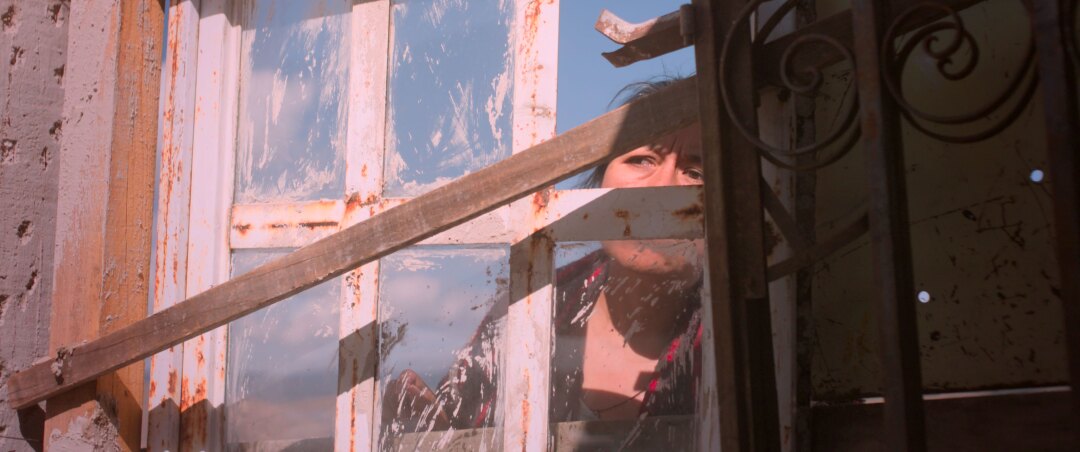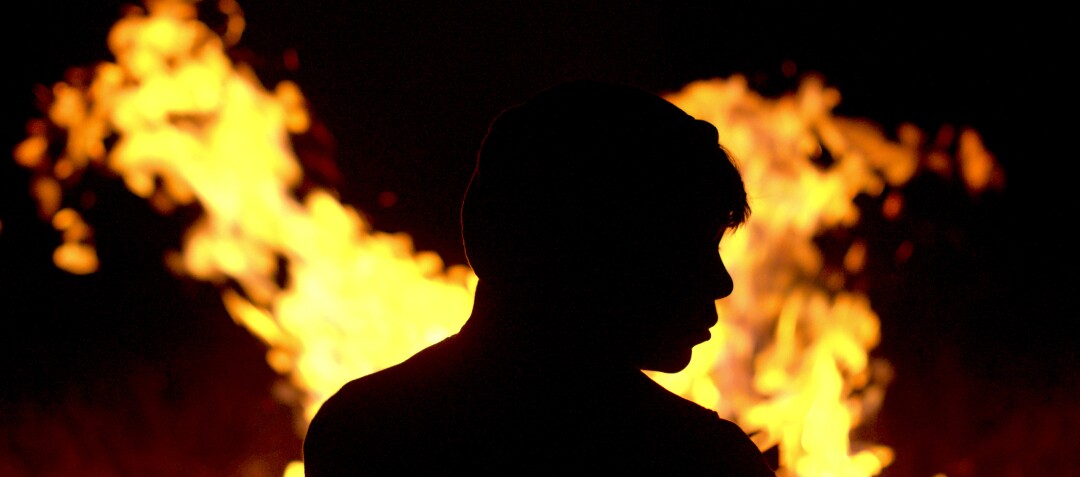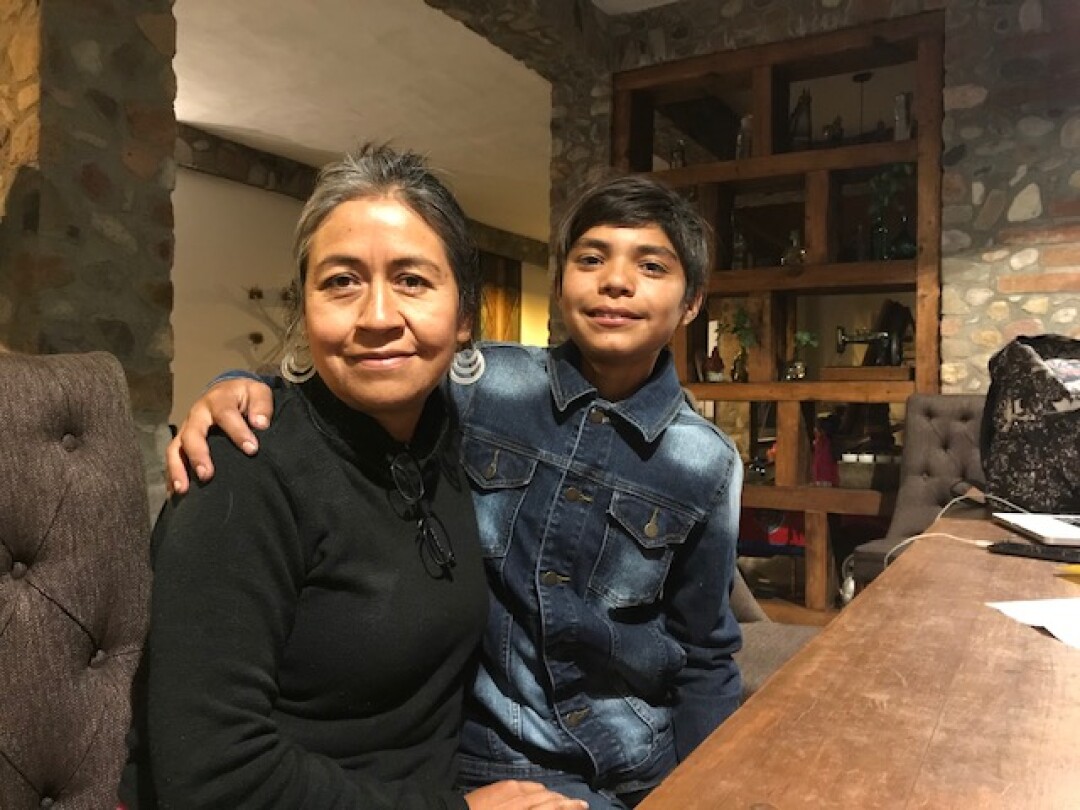
Outspoken filmmaking duo Fernanda Valadez and Astrid Rondero don’t believe Mexican storytellers have the luxury of creating apolitically. Not at a moment in history when thousands disappear or are murdered as a consequence of drug-related violence and the widespread state complicity that enables it. Neither of them set out to make movies with a social justice angle, but coming of age as artists in this environment urged them to confront the appalling national trauma.
“It’s inevitable to have a political stance because our reality is so harsh,” Rondero said. “It pushes you to want to defend yourself, and to want to talk about the issues the country is going through.”.
“What cinema does is to establish a conversation with reality, and that’s what makes it critical and nonconformist by nature, even if the themes are personal,” Valadez added.
An unshakable drama tinged with thriller elements, Valadez’s directorial debut, “Identifying Features” (Sin señas particulares), recently collected the inaugural Gotham Award for international feature and is now available via Kino Marquee and virtual cinemas. The film — which Rondero co-wrote, co-edited, and produced — wrestles with the very real atrocities from the sorrowful perspective of a middle-aged woman on a quest to find her missing son, dead or alive. The situation has become so precarious that even finding a body to bury seems far-fetched for many in search of a loved one.

Mother turned amateur investigator Magdalena (played by Mercedes Hernández) leaves her native Guanajuato for the menacing border with a mission. She is following the tracks of her only child, Jesús (Juan Jesús Varela), who left home in hopes of finding work in the U.S. But after months without as much as a phone call, only a bag and the corpse of his friend and travel companion Rigo (Armando García) has been recovered. Magdalena must find out what happened.
“We needed to tell this story through her journey,” Valdez explained, “because it’s only through a mother’s eyes that one can barely begin to understand the horror of the failed system that exists in Mexico.”
And that perspective is reinforced in every aspect down to the film’s title. “The title communicates how this violence makes us anonymous,” Valadez added, “and that it is only the love of people close to us that allows our stories to have a face, to no longer be just a number or a statistic.”
The highly sensorial film takes Magdalena on series of encounters that slowly guide toward the truth. Of those fortuitous meetings, one with Miguel (David Illescas), a recently deported young man on his way back to his own mother, proves the most poignant.
“At some point Magdalena says, ‘My son might be dead, but I need to know,’” the actress said. “That suspense without end is the greatest pain. I’ve heard many mothers say that in order to get closure they need to know for certain that their children are dead because not knowing is an eternal suffering.”
The director’s impetus to tell a story set at the intersection of migration and forced disappearances first manifested as a short film titled “400 Bags” (400 maletas). This smaller-scale iteration, which received a Student Academy Award nomination in 2015, was triggered by several gruesome events in the early 2010s, in particular the San Fernando Massacre. In March 2011, the Los Zetas cartel savagely killed at least 193 civilians who were kidnapped from hijacked buses in the state of Tamaulipas.
Such inconceivable brutality signaled a terrifying transformation in the way violence was perpetrated, not only quantitative but qualitative. Within a few years, the drug war that exploded during Felipe Calderón’s administration changed Mexico from a country where drug-traffickers (narcos) had been part of society in a veiled manner to one fighting a problem of alarming proportions.

At the time, El Blog del Narco, an anonymous site dedicated to covering cartel-related news too dangerous to run on mainstream outlets, gained prominence. Reliable sources regarding the waves of armed confrontations became even more elusive when Enrique Peña Nieto took office. By preventing mass media from divulging information, his government imposed a false sense of calm without any measurable signs of improvement.
The collective desire to move forward — even if neither the root causes nor the bloody symptoms of the matter had been addressed — was such that when Valadez and Rondero completed the short and submitted it for consideration at domestic festivals, responses suggested it was time to depart from stories about violence and to make movies about other topics. They were aghast.
That artificial spell broke when two tragic events reminded Mexicans that they were still under a reign of terror. First came the still unsolved case of 43 abducted Ayotzinapa students in September 2014, followed by the July 2015 massacre in Tlatlaya in which soldiers were ordered to execute alleged criminals.
In the wake of these dark episodes, the filmmakers became convinced the phenomenon hadn’t diminished but was growing exponentially. “That’s when we realized that it’s important for directors and all of us who make movies to create things that have an impact beyond mere entertainment,” Rondero said.
“I made the decision to start the screenplay again from scratch,” Valadez added. “I felt that the short, because of its scope of 20 minutes, wasn’t able to express with depth the magnitude of the humanitarian crisis.”
The feature-length film presented an opportunity to further explore the similarities between Magdalena’s boy, who embarked on a treacherous journey with the hope of a different life, and the slightly older Miguel, forced to return to his desolate homeland. The co-writers also introduced another heartbroken mother from a more economically privileged background to point out that the issue goes beyond migrants who come from an adverse social class.

Once production kicked off, the pair relied on the skills learned on Rondero’s first feature, “The Darkest Days of Us” (Los días más oscuros de nosotras), a film about gender violence centered on two women fighting against a chauvinist society, which Valadez produced. That experience prepared them to take on a more financially challenging project. Even with the state’s support, the limited budget to materialize “Identifying Features” demanded great logistic ingenuity and audacity from cinematographer Claudia Becerril Bulos.
Unable to move the production to multiple locations to capture the distinct landscapes seen on screen, Valadez chose to shoot segments of the story in different seasons over nine weeks spread over a whole year, all in her native state of Guanajuato. This ensured the images would give the impression that Magdalena had covered a long distance in a short span of time.
Only one trip to the U.S./Mexico border, primarily along the city of Tecate, was scheduled. From that visit they clandestinely obtained a visually powerful tracking shot of Miguel crossing from the U.S. to Mexico on foot, and a scene in which Magdalena interacts with real-life migrants at a shelter.
Practical considerations, combined with a moral responsibility to not exploit the pain of others, also influenced how the director handled the ending. On the page, the breathtaking conclusion was ghastly, but ultimately Valadez focused on a more abstract depiction of evil, creating silhouettes and textures that would work with their small and relatively low-definition camera.
“The graphic violence of those crimes is a terrible secret kept between the victim and the victimizer. The only ones that can speak in detail about it [are] the person that experiences that violence and the one who executes it,” Rondero said. The same reasoning applied the other aspects of the storytelling process, such as Valadez asking Hernandez not to talk to actual mothers of missing people and instead read journalistic accounts.
After a long career playing supporting characters, Hernández, reprises her role as Magdalena from the original short film. It marks her first feature film lead. She fondly recalls never having to audition, since Valadez had her in mind for the project from the early days. With the more fleshed-out take in “Identifying Features,” she acquired greater understanding of the character as a symbolic figure.
“We all have the experience being a mother or having a mother, so seeing Magdalena in these circumstances resonates with an audience and generates empathy,” Hernández said. “Because of what I’ve seen over these years with so much tragedy in Mexico, I’ve also realized a mother represents strength. Mothers are tireless.”
A kindred spirit to Valadez and Rondero and a vocal critic of injustice, Hernández deeply appreciated the filmmakers’ decision to work with a below-the-line team almost entirely composed of women. For the creative duo, feminism fuels their stories and is reflected in how they are brought to life. Their words and their work reaffirm their commitment to resistance.
“Being with them made me feel even more of a feminist,” Hernández said, “and reminded me that we can carry the equipment and do the hard work without men around. It also resulted in a beautiful sorority between us all.”
With that in mind, Rondero points out that, no matter how talented, Mexican women working in film are rarely in high demand in comparison to their male counterparts. That systemic disadvantage worked in the movie’s favor because the crew was able to commit to work longer on “Identifying Features” but shows how ingrained misogyny is the industry.
“Sometimes limitations come as blessings in disguise,” Valdez explained. “If we’d had a more ample budget we would have probably had a much more conventional method of working, perhaps a larger crew with a more different dynamic.”
More recently, Rondero and Valadez have raised their voice via social media regarding current president Andrés Manuel López Obrador’s major blows to the arts, especially film, with the disappearance of funds like Fidecine and Foprocine. These subsidies have been key in the professionalization of the filmmaking crafts in Mexico, giving many emerging talents their start. The battle for the future of one of the country’s most important cultural exports remains ongoing.
“If they continue to bet on giving filmmakers less money, hoping that more limitations will result in better movies, in about five years Mexican cinema will come down crashing,” said Rondero, refuting the notion some hold that resourcefulness, not out of choice but necessity, has made Mexican directors stand out.
Complications notwithstanding, the global success of “Identifying Features” is undeniable. The film began its long-running streak of awards victories at the 2020 Sundance Film Festival, where it earned a jury award for screenplay, and more unexpectedly, considering the difficult subject it centers, the audience award.
“That’s what has moved us the most and has taught us a lesson,” Rondero said. “We were the kind of filmmakers who would say, ‘Audience awards always go to comedies or lighter fare.’ But we learned that’s not true, because sometimes the audience also feels empathy for a movie with these characteristics.”